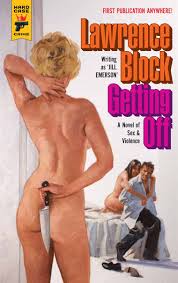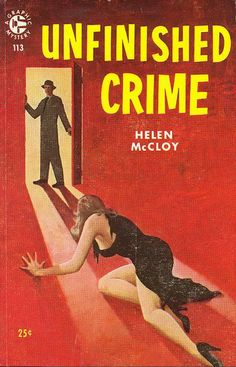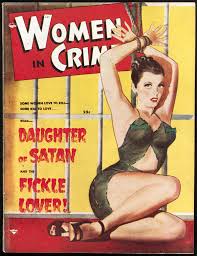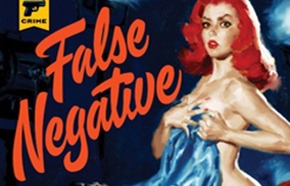Books
The Myth of the Gratuitously Violent Crime Novel
By Sharon Bolton
With tiresome regularity do we hear that crime fiction is getting too violent (most recently at this year’s Bristol Crimefest); that complex plotting and intriguing characterization have been replaced by torture porn; that sales-hungry authors are scrabbling to write the goriest, most sickening scenes of sexual violence.
Publishers collude, we’re told, festooning book-jackets with terrified (but still beautiful) semi-clad females.
They’re typically written by women, these books. Men don’t dare write anything so nasty, because, goodness, what would it say about them if they did? Actually, they’re usually written by lesbians, because we all know they hate men.

Sorry, I’m not buying it anymore. The gratuitous crime novel is a cultural myth. It’s a bogeyman. It’s akin to the snuff movie, invented to scare us, to fill column centimetres in newspapers. In real life, though, it’s as scarce as an albino Dodo with heterochromia.
Steve Mosby was the first to suggest the emperor might actually be starkers. “Where are these best-selling and influential crime novels with tortured naked women on the cover?” he tweeted. I replied: “Mine has a worried woman in a tight anorak, does that count?”
It didn’t. But it got me thinking. It got me panning the internet for pictures of naked women. (It felt a bit creepy after a while) I did find one or two scantily clad ladies (on book covers, you understand) but in such a massive genre, you’d expect one or two, surely?

So if the gratuitous cover can’t be borne out, what about the rest?
Well, I read a SHED-LOAD of crime fiction and honestly can’t remember the last time I abandoned a book because of its ‘gratuitous’ violence. This is CRIME, let us not forget, and without violence, or at least the threat of it, there can be no crime that we care enough about.
Of course, books appear from time to time, in which violence is used to grab attention, to disguise a weak storyline or poor writing, but generally speaking, these books don’t do terribly well. They are quickly forgotten. There is no evidence that I can see of a rising trend.
Let’s try and break it down further, shall we? We’re told books have ‘more gory descriptions of killings.’ Well, I’m not sure about this either. Most murders in most crime novels take place off the page. Val McDermid, in my company, once said, ‘the violence is not in my books, it is in my readers’ imaginations.’
We also hear about “autopsy scenes dragged out for several pages”? Well, this may be true but it’s entirely understandable. A couple of decades ago, we saw a surge in interest in forensic science, which gave rise to the post mortem scene, to a focus on maggots, decaying flesh, and the stories etched on the human skeleton. We saw more dead bodies on our pages, but our interest was in the science underpinning the investigation, not in the violence that had caused it in the first place. And, key phrase: a couple of decades ago. This is hardly new!

So, I don’t accept that there is a rising trend towards gratuitous crime. Or, if there is a slight upward curve, that it is at all out of proportion to what is happening in reality. Culture reflects reality, remember, and in a world where the worst atrocity can be broadcast in all its gory-glory within seconds, we should naturally expect the censorship of our fiction to relax accordingly.
And what does it matter anyway? Violence in our culture is healthy and normal. Make-believe is how we come to terms with our fears and make ourselves feel better. Nervous Nellies claim that a violent culture sparks violence in real life but they’ve yet to offer any proof and, frankly, I’ll take a lot of convincing. Check out the personal histories of some real-life, sadistic predators. How many of them were avid readers?
Now, I know nothing will change just because I’ve written this. As long as there are crime writing festivals we’ll see panels brought together to discuss “The Violent Tide Sweeping our Genre,” “Women Writing Violence,” “Bloody Lesbians in Crime.” Looking ahead to Theakston’s 2040, I see myself on a panel called “Lavender, Lace and Lethal Stab-Wounds” with a couple of other dippy old bats, discussing the increasing propensity for little old ladies to pen shockingly violent novels. We’ll all pretend to be terribly interested and a little bit worried about the future of our genre. And we’ll all know we’re talking bollocks.
The rise of the gratuitously violent crime novel is as fictitious as the genre it claims to be shaping.
By Sharon Bolton
Sharon Bolton is taking part in our Dead Good Fiction Festival on Facebook right now! What do you think? Is the gratuitously violent crime novel a myth? Head over to Facebook and discuss with Sharon directly.
4 Comments
Join the discussion
Please note: Moderation is enabled and may delay your comment being posted. There is no need to resubmit your comment. By posting a comment you are agreeing to the website Terms of Use.


Having read several of the Hard Case Crime novels in recent years for review, some of them are pretty fruity and violent. Many of them are also re-releases from the 1950s, so if the violent crime novel is a problem, it is one that has been around for over 60 years.
There has to be that fine line. Which must be difficult to equate for an author. Especially in the first page, or chapter of a novel. Too graphic, can deter readers.But it still has to grab. One did me a couple years back.The first chapter was relentless, graphic detailed….carnage. And I read a lot of crime fiction. But I couldnt continue with that one. Its not perhaps, what is being described, it is the way in which it is described. Sometimes, a little can be enough. Or power of suggestion. Then let the reader’s imagination take over. If it upsets, its their loss 🙂
When you put it like that Sharon, it does sound a bit like something the Daily Mail dreamed up as a scare-story! I used to love gory and salacious details when I was a teenager, but now I’m a dippy old bat too, I have no interest in writing them. Could it be that it’s our tolerance that wears thin?
Maybe more graphically violent, But that said it’s a sign of the culture we now have of trying to shock. I don’t personally think it’s a bad thing, different people deal with it in different ways. It’s the same with video games, and a long time ago rock music, where upon certain people would try to lay blame at their doorstep for ill’s within society..